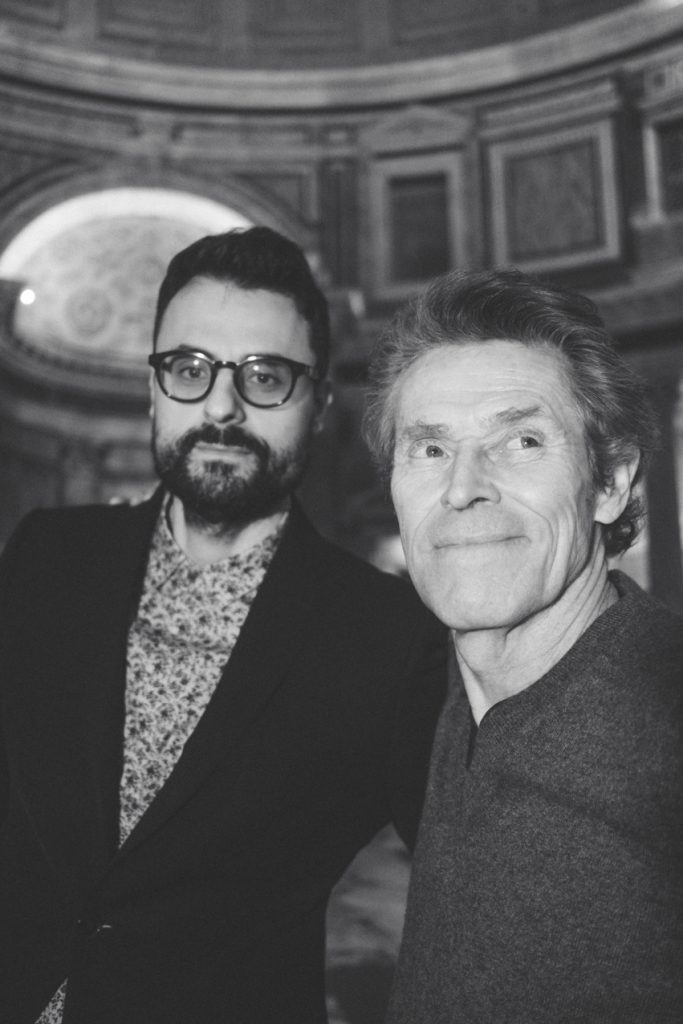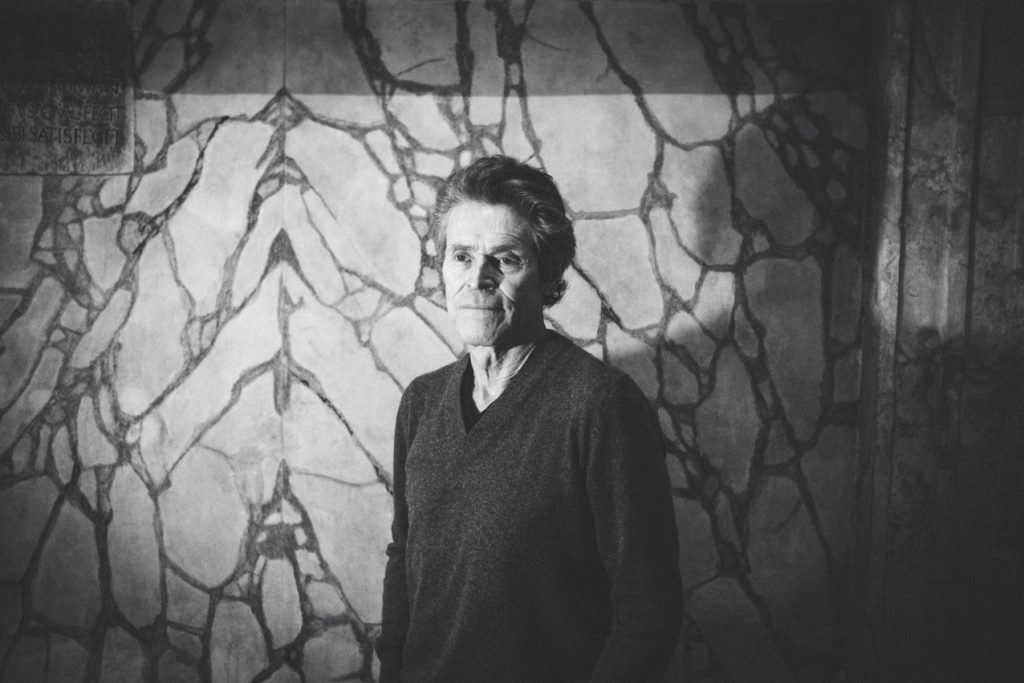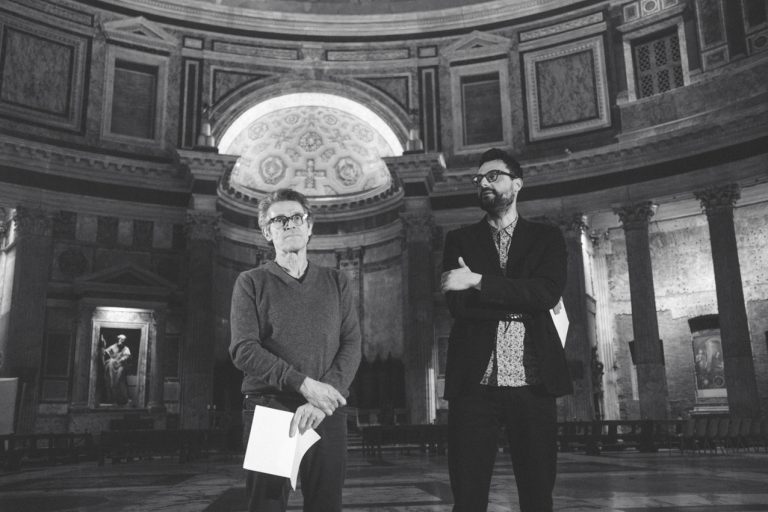

Gabriele Tinti’s powerful poetry pairs up with Willem Dafoe’s captivating performance at the Pantheon. Tinti’s emotional and reflective verses come alive as Dafoe skillfully brings them to life, taking audiences on a captivating journey through the human experience.
On World Poetry Day, Willem Dafoe honoured the occasion with a heartfelt reading of Gabriele Tinti’s verses at the Pantheon. Amidst the ancient grandeur, Tinti’s poems explored the Pantheon’s spiritual significance and paid homage to its history, particularly to the martyrs interred within.
Dafoe recounted tales of Christian saints like Saint Lawrence and Saint Sebastian, crafted with inspiration drawing inspiration from the timeless artworks of Carracci and Raphael. These masterpieces, housed within the Pantheon, spoke of humanity’s eternal search for the divine. At the heart of the event was Raphael’s evocative ‘Transfiguration,’ a work of profound emotion left incomplete yet brimming with significance. Dafoe’s interpretation mirrored its beauty, stirring a collective yearning for spiritual transcendence. Within this setting, Dafoe became a conduit for reflection and contemplation of Gabriele Tinti’s work, inviting the audience to journey through history and faith with him. His performance bridged past and present, leaving a lasting impression on those present.
As the evening unfolded, Dafoe’s artistry illuminated the Pantheon, connecting poetry, history, and human experience. Though witnessed by a select few, its impact promises to resonate far beyond, echoing through time. This moving tribute was part of Tinti’s larger ‘Ruins’ project, which explores ancient narratives amidst Rome’s rich heritage. By collaborating with talents like Willem Dafoe, Tinti’s creations keep building connections that go beyond time and place. In the midst of Rome’s rich history, Dafoe’s reading at the Pantheon shows how poetry can bring people together, stir inspiration, and uplift souls.
In honour of World Poetry Day, we sat down with Gabriele Tinti to discover what poetry means to him.
hube: What does poetry mean to you? What sets it apart from the combination of words we use to communicate in our daily lives?
Gabriele Tinti: When everything is silent, poetry speaks. It’s an act of resistance against the mundane, everyday use of words. Born from silence and wounds, poetry is destined not to entertain or console but to keep us alert. Mine, in particular, is an attempt at prayer, it’s lamentation, confession. I don’t know where it leads the reader. Certainly, it doesn’t reassure them.
h: Could you share your thoughts on the power of performance in poetry? How do you think the act of recitation enhances the impact and resonance of your work, particularly when delivered by someone like Willem Dafoe?
GT: When poetry is spoken, it always becomes something else, losing the magic of the written word to acquire a new one. Being able to entrust one’s verses to a personality like Willem Dafoe, one of the greatest living actors, is an honour. He is a master at creating density around certain words, at making the writing resonate as it should, without excess.

